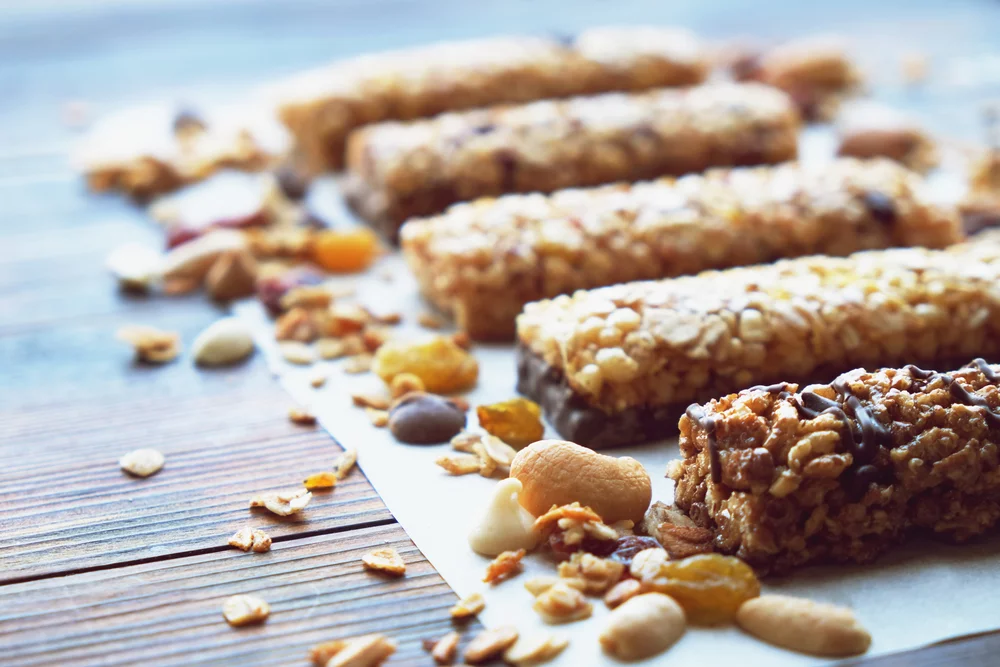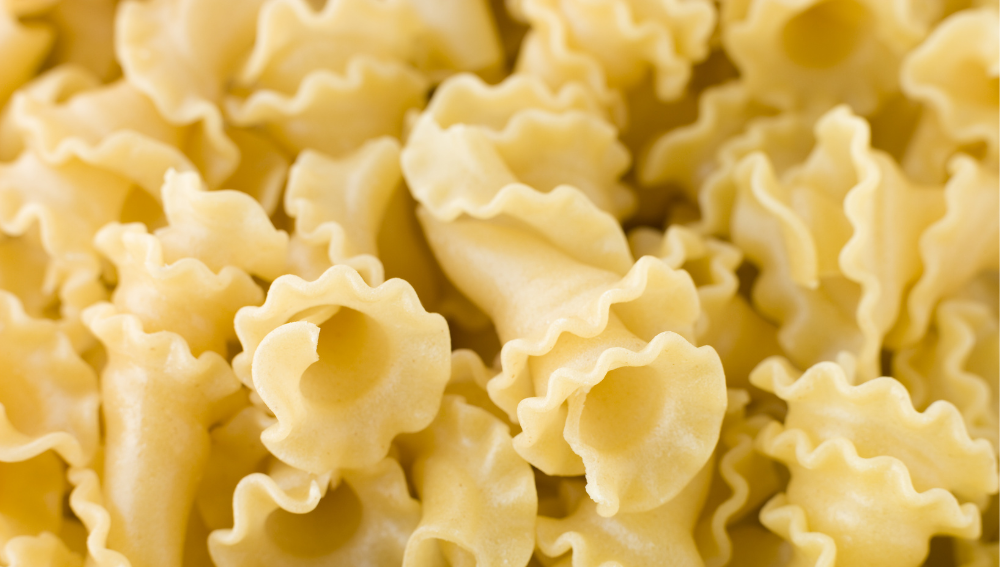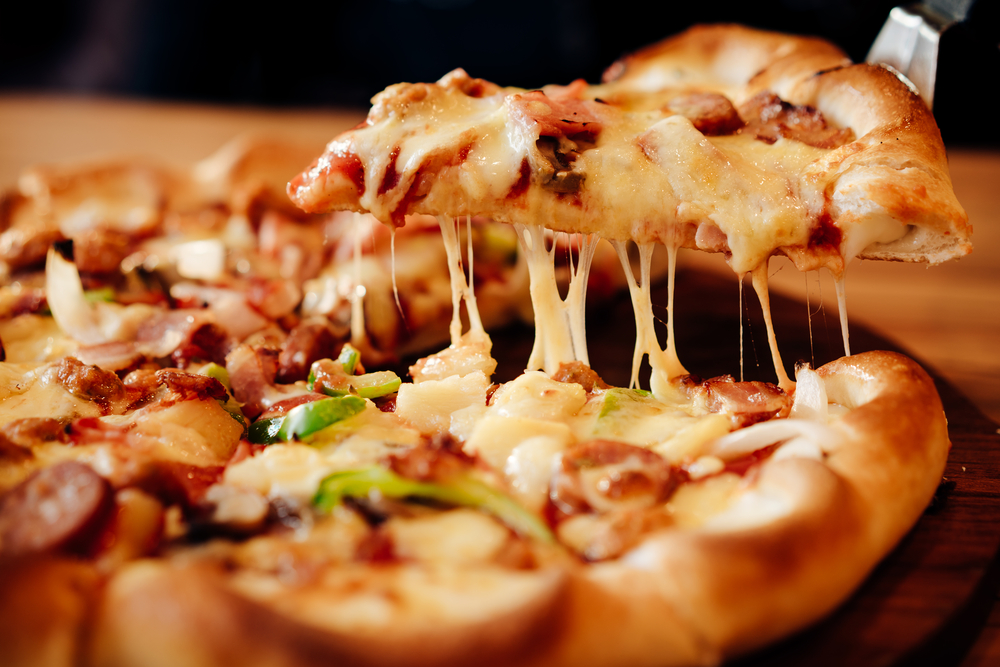Cavatelli pasta has long held a special place in the hearts of pasta enthusiasts. Known for its unique shape and delicate texture, this Italian classic has become a staple in many kitchens across the globe.
However, there may be situations where finding cavatelli in the store is difficult, or dietary preferences restrict its consumption. In these cases, it’s important to have a suitable substitute that maintains the spirit of the dish without compromising on taste or texture.
Finding the right substitute for cavatelli pasta begins with understanding what makes it unique. It would help to consider factors such as shape, size, and cooking time while searching for a viable alternative.
Keeping these aspects in mind, one can explore a variety of options that can serve as a stand-in for cavatelli, ensuring that your favorite pasta dishes remain enjoyable, even when the star ingredient isn’t readily available.
Key Takeaways
- Cavatelli pasta’s distinct attributes influence the choice of an appropriate substitute
- Shape, size, and cooking time are vital factors to consider when selecting a cavatelli alternative
- The right substitute ensures the essence of your favorite pasta dishes is preserved
Understanding Cavatelli Pasta

Cavatelli pasta is a traditional Italian dish that has its roots in the regions of Southern Italy, particularly in Puglia, Molise, Campania, and Calabria.
This type of pasta is recognized for its small, shell-like shape, which allows it to hold sauces well, making it an ideal choice for various Italian recipes.
The process of making cavatelli pasta begins with the dough. It is typically made using semolina flour, which is derived from durum wheat. Durum wheat flour is the primary choice for this pasta due to its high protein content, which provides the pasta with a firm and elastic texture.
The semolina flour is combined with water, salt, and sometimes oil or fat, depending on the regional preference.
Kneading the pasta dough to achieve a smooth, elastic consistency is crucial. It ensures that the cavatelli holds its shape while cooking and does not become too soft.
Once the dough is kneaded well and covered to keep it from drying out, it is divided into smaller portions which are then rolled into thin ropes with a diameter of approximately 1/4 inch.
The process of shaping cavatelli involves using the index finger to press and curl each small piece of dough. A gentle pressing motion creates a small indentation, while a slight curling motion forms the classic cavatelli shape.
Once the pasta is shaped, it is either transferred to a floured surface or placed directly into boiling water for cooking.
Cooking time for cavatelli pasta varies depending on whether it is freshly made or dried. Fresh cavatelli pasta generally takes around 5-7 minutes to cook, while dried cavatelli may require 10-12 minutes.
It is essential to keep an eye on the pasta during the cooking process to ensure that it maintains its shape and does not become overcooked or mushy.
In summary, cavatelli pasta is a versatile and unique Italian dish originating from Southern Italy. Its distinctive shape, formed from semolina flour dough, makes it perfect for holding sauces and creating delectable Italian recipes.
Understanding the process of making and cooking cavatelli pasta is crucial for achieving the ideal texture and flavor in any dish featuring this delicious pasta variety.
Nutrition Facts of Cavatelli Pasta
Cavatelli pasta is a popular choice in many cuisines, offering a satisfying and fulfilling meal option. This pasta variety is made from a combination of semolina flour and water, giving it a unique texture and flavor.
When assessing the nutritional value of cavatelli pasta, it is important to consider the specific ingredients used, as well as factors such as portion size and cooking methods.
In a typical 100-gram serving of cavatelli pasta, one can expect the following nutritional breakdown:
- Calories: approximately 370 calories, primarily from carbohydrates
- Carbohydrates: about 75 grams, which provides energy for the body
- Protein: around 13 grams, aiding in muscle building and repair
- Fiber: nearly 3 grams, supporting digestion and a feeling of fullness
- Calcium: around 24 milligrams, which contributes to bone health
- Iron: approximately 3.5 milligrams, to help oxygen transportation in the body
- Sodium: usually varying between 1-5 milligrams, depending on added salt during cooking
It is important to note that these values may differ based on factors such as the specific brand or type of cavatelli pasta, as well as any additional ingredients or sauces used in a dish.
For example, using whole wheat flour instead of semolina can increase the fiber content of the pasta.
When choosing cavatelli pasta, it is advisable to opt for a high-quality product made from ingredients like durum wheat semolina, which is known to have a higher protein content and a lower glycemic index than regular wheat flour.
This will ensure a more nutritious and healthy option when consuming cavatelli pasta as part of a balanced diet.
As with any pasta variety, moderation and portion control are key to maintaining a healthy and balanced diet. Cavatelli pasta can be a nutritious and delicious component of a meal, particularly when paired with vegetables, lean proteins, or healthy fats.
By being mindful of serving sizes and incorporating a diverse array of nutrient-dense ingredients, cavatelli pasta can be enjoyed as a flavorful and nourishing choice.
Cooking Cavatelli Pasta
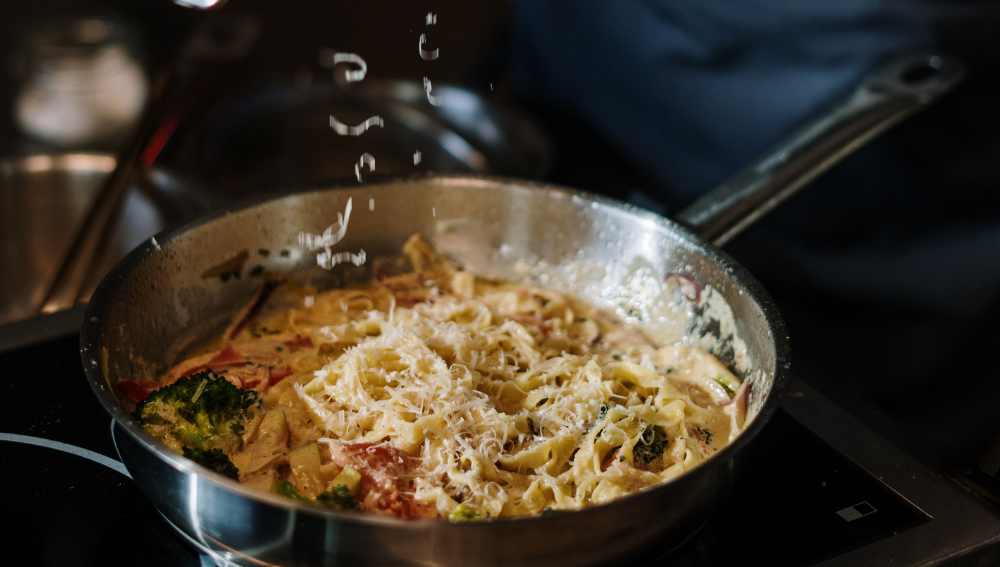
Cavatelli pasta is a versatile and delicious type of pasta that can be served with a variety of sauces and accompaniments. To prepare a perfect cavatelli dish, follow these simple steps:
First, prepare your chosen sauce. Cavatelli pairs well with tomato sauce, meat sauce, creamy sauce, pesto, or simply butter and olive oil with some herbs. For tomato or meat sauce, consider using sausage or meatballs for an extra layer of flavor.
When choosing a creamy sauce, a classic Alfredo or cheese variation is a popular option. If you prefer to keep it simple, melting butter and freshly chopped herbs like basil or parsley over your pasta will create a light and delicious dish.
Next, it’s time to cook the cavatelli. If you have a pasta machine, use it to shape your pasta dough into the signature ridged and curled shapes. Alternatively, you can also buy pre-made dry cavatelli from a supermarket. To cook, bring a large pot of salted water to a boil and carefully add the pasta.
Cooking time will vary depending on whether you’re using fresh or dry cavatelli. Fresh pasta should take about 3–4 minutes, whereas dry pasta may need around 10–12 minutes. The key is to taste the pasta as it cooks, ensuring it becomes al dente, or slightly firm to the bite.
While the pasta is cooking, you can warm up your sauce of choice and prepare any additional ingredients that you wish to include, such as grated cheese, fresh herbs, or cooked sausage or meatballs.
Once the pasta is cooked, drain it well and add it directly to the saucepan with the sauce. Gently toss the pasta and sauce together, allowing the cavatelli to absorb the flavors of the sauce.
Serve the finished dish with a sprinkling of grated cheese, a drizzle of olive oil, or more fresh herbs to taste. Cavatelli is a satisfying meal option that can be enjoyed with a multitude of sauces and ingredients, making it a versatile choice for home cooks.
If you happen to have leftover cavatelli, it can easily be stored in the freezer for future use. To freeze, let the cooked pasta cool completely, then place it in a resealable freezer bag or airtight container.
This way, you’ll always have delicious, homemade cavatelli on hand for a quick and satisfying meal.
Characteristics of Cavatelli Substitutes
Cavatelli pasta, known for its versatile and chewy texture, is a favorite among pasta enthusiasts. When looking for a suitable substitute, several factors should be considered to recreate the desired dish.
Not all substitutes will work in every recipe, and each alternative offers its unique taste and texture characteristics.
One of the primary considerations when choosing a substitute for cavatelli pasta is the texture. Heartier pasta types such as penne, fusilli, rotini, farfalle, and orecchiette can mimic cavatelli’s firmness and slightly chewy texture.
These types of pasta hold up well under thicker sauces, making them excellent options for dishes that require substance.
Other possibilities include rigatoni, gnocchi, and cavatappi. Rigatoni shares some similarities with penne, offering a thicker and heartier bite.
Gnocchi can be a good substitute if a softer, potato-based alternative is desired. Conversely, cavatappi provides a distinctive spiral shape that captures thick sauces similarly to cavatelli.
For those who prefer a family favorite, macaroni and cheese or small shell pasta are also viable options. These readily available substitutes hold up well to hearty sauces due to their size and grooves.
Additional alternatives include amori, spirali, and cellentani. These pastas boast unique shapes such as spirals or bow-tie, which can add visual interest to a dish while also complementing the original cavatelli texture.
In summary, finding the perfect substitute for cavatelli pasta hinges on the desired dish and culinary preferences.
Whether one opts for heartier pasta like farfalle or fusilli, or unique alternatives like spirali or orecchiette, understanding the distinctive characteristics of these substitutes will ensure a successful and equally delicious dish.
Remember to consider factors such as texture, size, and shape when selecting a proper substitute to deliver a satisfying culinary experience.
Cavatelli Substitute in Different Recipes
 Cavatelli pasta is a popular choice in many dishes due to its unique shape and texture. However, there are several alternatives that can successfully replace it in various recipes.
Cavatelli pasta is a popular choice in many dishes due to its unique shape and texture. However, there are several alternatives that can successfully replace it in various recipes.
By considering the dish’s type and flavor profile, one can easily find a suitable substitute that complements the meal without compromising the overall taste.
Gnocchi is a homemade pasta that works well as a substitute for cavatelli in most recipes. Its small, pillow-like shape and fluffy texture make it an ideal replacement for dishes that require a sturdy pasta, such as stews, soups, and casseroles.
Additionally, gnocchi pairs nicely with a variety of sauces, making it a versatile option for pasta dishes.
For pasta salads and lighter meals, fusilli is an excellent substitute. The spiral shape of fusilli provides an interesting visual element while also offering a different experience when it comes to texture.
Its ability to hold onto sauces and dressings makes it a fantastic choice for pasta salads, and it can easily be combined with ingredients like mozzarella cheese and fresh vegetables.
In dishes that feature baked pasta, such as casseroles, shell-shaped pasta is a strong contender to replace cavatelli.
The small hollow shape of shell pasta allows it to hold more sauce and other ingredients, creating a mouth-watering bite that is both delicious and satisfying.
Shell pasta is particularly well-suited for recipes that call for a thick, creamy sauce or for inclusion in a casserole.
When homemade pasta is not an option, and a substitute with a similar texture is desired, there is still hope. Orecchiette, an Italian pasta that resembles small ears in shape, can fill the void left by cavatelli.
Its unique form allows it to catch and hold onto sauces, making it work well in an array of recipes such as soups, salads, and pasta dishes with robust flavors.
In summary, there are various pasta options available for those looking to substitute cavatelli in their recipes.
By understanding the particular requirements of the dish, whether it be a soup, stew, salad, or casserole, one can confidently select an alternative that enhances the meal without sacrificing its original integrity.
How to Choose a Cavatelli Substitute
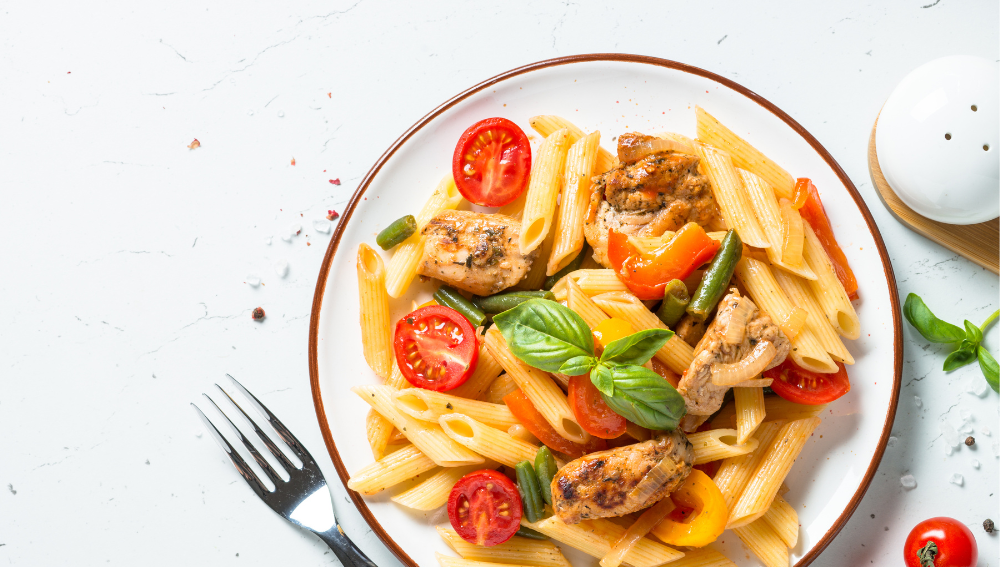
When looking for a substitute for cavatelli pasta, there are several factors to consider. Firstly, focus on the dish you are making and the sauce and ingredients used. Ideally, the alternative pasta should complement the flavors and textures in your dish.
Penne pasta and rigatoni are excellent choices if you need a substitute with a similar shape and texture to cavatelli. Both are tube-shaped, allowing them to hold onto sauces and perfectly complement rich, meaty recipes.
Additionally, penne’s slanted edges add a unique visual appeal and texture.
Farfalle and orecchiette are other viable options. Farfalle is better known as bow-tie pasta, and offers a similar thickness and bite when cooked.
Orecchiette, meaning “little ear” in Italian, have a unique shape perfectly suited for catching and holding sauces, making them great in saucier dishes similar to cavatelli.
Both fusilli and rotini can be considered as substitutes, with their spiral shape providing excellent sauce-holding abilities.
Additionally, cavatappi, amori, and spirali are curly pasta types that can be a good alternative, as their distinct twists can add interesting textures to your dish.
Certain alternatives work better for specific dishes. For example, use gnocchi as a fresh pasta substitute when it comes to softer dishes or soups due to its similar tender texture.
Made from potatoes or semolina, gnocchi is a fantastic option if you’re looking for a non-noodle alternative.
Lastly, consider the tools you have at home for making fresh pasta. It is possible to create cavatelli-like pasta shapes, such as cellentani, by using a wooden board or a pasta machine with the appropriate attachment.
In conclusion, when choosing a cavatelli substitute, consider the dish’s ingredients, purpose, and your personal preferences.
There are various pasta types available that work well as substitutes, but it is essential to find the one that complements your recipe and satisfies your taste buds.
Frequently Asked Questions
What are some alternatives for ditalini pasta?
Ditalini pasta is a small, tube-shaped pasta commonly used in soups and pasta salads. Some suitable alternatives for ditalini pasta include orzo, stelline, and acini di pepe.
These pastas have a similar size and shape, making them a good substitute in recipes calling for ditalini.
Can I use penne instead of cavatappi?
Yes, penne pasta can be used as a substitute for cavatappi. Both penne and cavatappi are tube-shaped pastas, with the main difference being cavatappi’s helical shape.
Their similar size and texture make them interchangeable in most recipes, although the straight shape of penne may not hold sauces as well as cavatappi’s spirals.
Is gnocchi a suitable replacement for cavatelli?
Gnocchi and cavatelli are similar in that they are both small, dumpling-like pasta shapes made from dough. However, gnocchi is typically made with potatoes, while cavatelli is made from a semolina flour dough.
While they may not have the exact same texture, they can often be used interchangeably in recipes calling for small, doughy pasta.
Which pasta shapes are similar to cavatelli?
Several pasta shapes share similarities with cavatelli, such as malloreddus, orecchiette, and ricotta gnocchi.
While they may differ slightly in appearance, these pastas all share a similar size and texture, making them good alternatives for cavatelli in recipes.
Can fusilli be used as a substitute for cavatelli?
Fusilli pasta, with its spiral shape, can be used as a substitute for cavatelli in some cases. While they don’t share the same shape, fusilli’s spiral structure can hold sauce well, just like cavatelli.
The primary difference is that fusilli is not as dense or heavy as cavatelli, so this substitution may alter the texture of the finished dish.
What are the best alternatives for orecchiette pasta?
Orecchiette pasta, often referred to as “little ears,” is a small, round pasta with a concave shape that holds sauce well.
If you’re looking for an alternative to orecchiette, consider using pasta shapes like conchiglie (shells), farfalle (bow ties), or rotini (spirals).
These pastas can hold sauce similarly to orecchiette and will work well in recipes calling for this type of pasta.



